Planning & Prep
How To Read Food Labels: Guide to Nutrition Labels
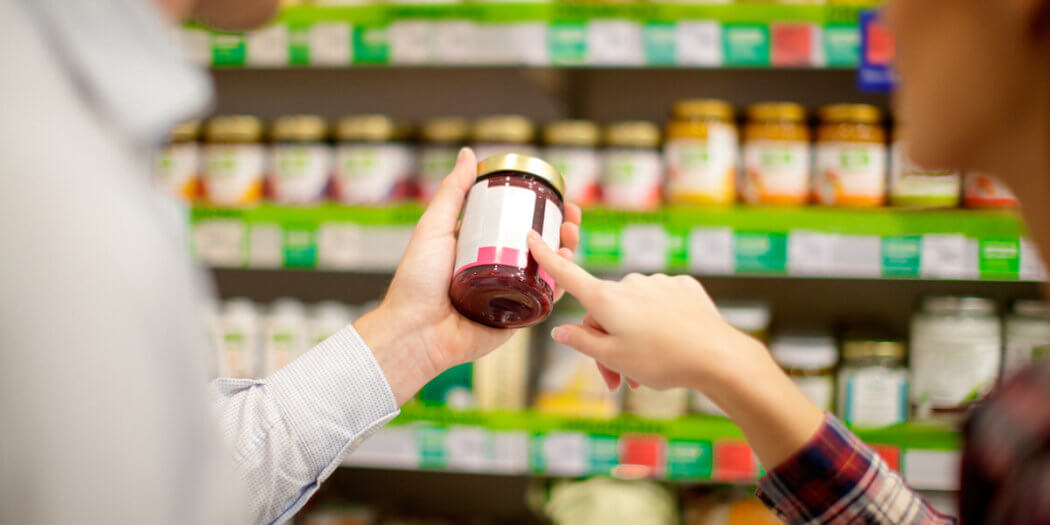
Sooner or later, most of us will reach a stage in our lives when we start paying closer attention to what we’re putting in our bodies.
Moderation is key, but eating a well-balanced diet isn’t always easy. How do you know if you’re eating too much or not enough? Perhaps you’re getting too much or too little of a specific type of nutrient or ingredient. Maybe you’re sensitive or allergic to a particular food. Even a nutritionist can’t keep track of all these variables from memory, so how do we manage?
Food labels are your friend and a tool everyone should use to make decisions and compare products while they shop. When you read food labels, you might be surprised just how often you’ll notice that two similar products can be very different. Unsure how to read food labels? Our guide is here to break down each item on nutrition labels and what information they reveal.
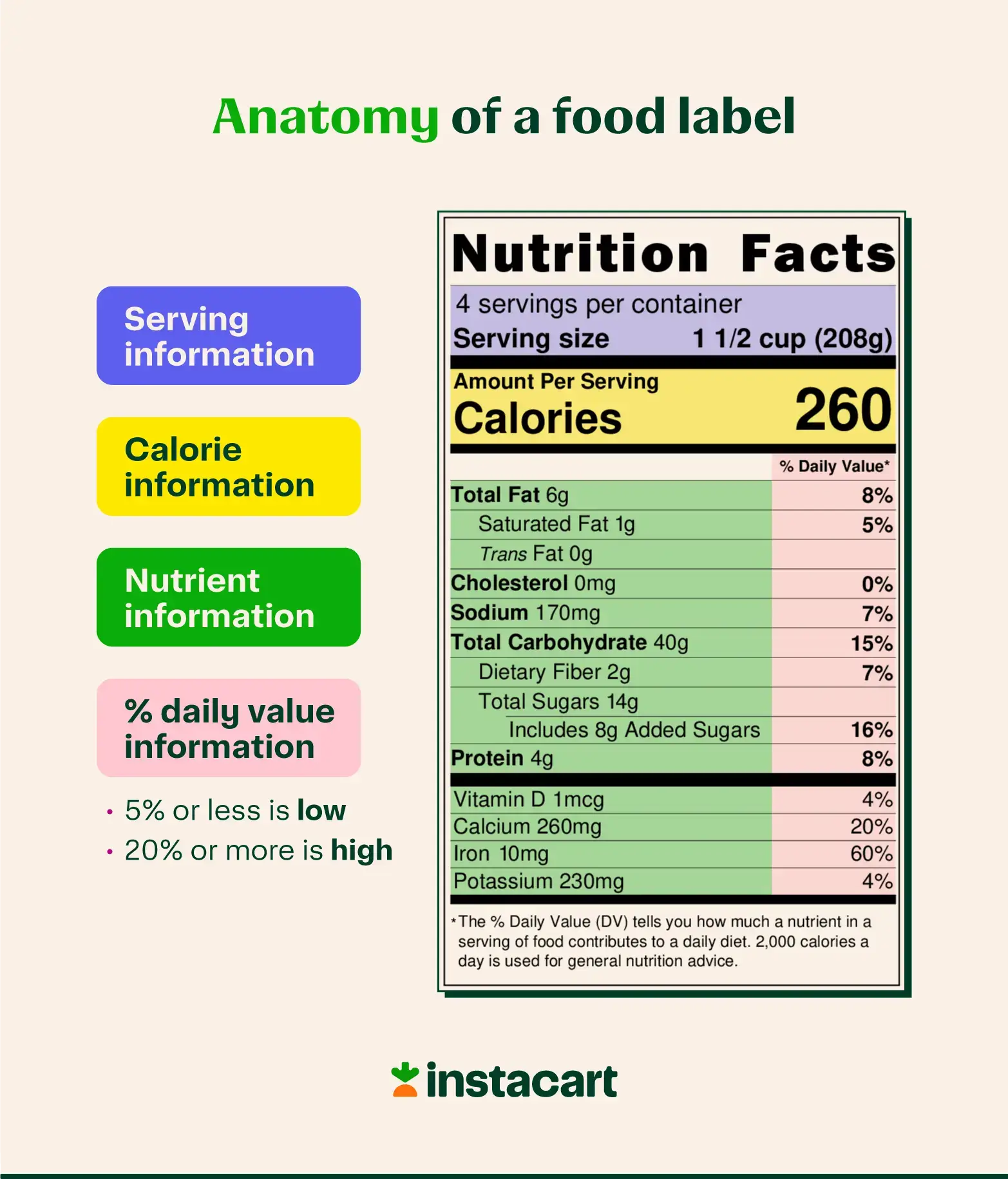
Servings and serving size
This section of the label tells you how many servings the package contains in total and the measurements for one serving. The serving size may be listed in units such as cups, grams, ounces or tablespoons. In some cases, the serving size may be the entire contents of the package.
The data that follows this section will usually refer to the amount of each item per single serving but may also list information surrounding other aspects of the product. Use our serving size calculator to determine the right portions for you and your family.
Calorie count
This section tells you how much energy is contained in one serving of the product, as measured in calories. The FDA recommends that adults consume around 2,000 calories per day, although how much each individual should actually consume depends on many variables, such as gender, age, height and weight.
Using 2,000 calories as a baseline, you might use the calorie count on food labels to identify products that are high in calories or to determine how many pieces of something you can consume without risking overindulging. Check out these low-calorie meal ideas to help you hit your health goals.
Nutrients, vitamins and minerals
Food labels generally list how much fat, protein and carbohydrates are contained in one product serving. These can be broken down into subcategories. For example, a product’s fat content is usually presented as total fat, with figures also provided for saturated fat and trans fat. The total sugar content is usually listed under carbohydrates, along with how much added sugar the product contains.
Other nutritional items commonly listed on food labels include cholesterol, sodium and key vitamins and minerals such as iron, calcium and vitamin C.
Use the daily value percentage to identify the key nutrients contained within a product. In general, look for balance in your diet. You don’t want to consume too much of any nutrient from a single source.
Percent daily value (%DV)
When learning about how to read food labels, it’s important to also understand the percent daily value (%DV). For example, the nutrition facts section of a food label tells you how many grams of fat the product contains, but it might not be obvious whether the product’s fat content is high or low. Food labels list percent daily values data to provide a helpful reference point.
The %DV tells you what percentage of your daily recommended intake of a particular nutrient is contained within one serving of the product. Use this information to judge whether the product provides appropriate amounts of certain nutrients.
For example, if one serving of a ready-made dinner for two provides over 50% of your daily fat intake, consider whether you consume large amounts of fat during your other meals.
Tips for reading food labels

Food labels serve several purposes. Usually, on the front of the label, you’ll find the name of the product, as well as brand identifiers like the company logo, colors, taglines and contact information. Featured less prominently will be a complete list of ingredients contained within the product.
Check out these tips if you’re still unsure how to read a food label.
1. Beware of misleading claims
Check the main label, featuring the product name and branding. The label may feature claims intended to promote the product as healthy or nutritious. These boasts are often featured prominently, intended to grab your attention, but read skeptically. For example, a product may be fat-free but also contain excessive quantities of sugar or sodium.
2. Check the list of ingredients
One of the first things you should do is check the list of ingredients. Ingredients are listed by quantity contained from highest to lowest. Checking the list of ingredients is particularly important if you, someone in your family or anyone else who’ll be consuming the product has any allergies or food intolerances.
However, some people might be looking for a product that contains a specific ingredient, while others prefer not to buy processed foods or foods containing lots of additives. In general, a long list of ingredients (two lines or more) indicates that a product is highly processed.
3. Understand the nutrition facts
The nutrition facts section of a food label is where the scientific data is, and this is where you can find out what’s really going on. If you can decipher the nutrition information on a food label, you’ll have a much better understanding of the types of food groups and nutrients the product contains. This can help you make purchasing decisions that add up to a more balanced diet containing just the right amount of vitamins, minerals and other nutrients.
4. Consider your dietary goals and restrictions
When it comes to nutrition labels, the portion size may be too big or small for your health goals. It’s also very common to consume more of a product than expected due to overlooking the portion size on the nutrition label.
Make sure to keep your personal dietary goals and restrictions in mind when grocery shopping. Perhaps you’re making a low-calorie soup and add regular cheese instead of low-fat. Understanding food labels can help you make choices that align with your health and dietary needs.
Grab it now on Instacart:
Common food label claims and what they mean

Aside from learning how to read food labels, you also need to know how to decipher what they mean. Some food labels may catch your attention with “no sugar added” or “natural” claims. Here are some common food label claims and what they mean.
- Natural: This term implies that the product is made from natural ingredients without artificial additives or preservatives. However, it’s not a term regulated by the FDA, meaning the product may still contain artificial flavors, colors or other synthetic ingredients.
- Low-fat or fat-free: While these labels may suggest that the product is a healthier option, it typically means the sugar amount is higher to compensate for the flavor from lack of fat. Make sure to check the sugar content of the product before consuming it.
- Made with whole grains: It’s not uncommon for products with this claim to only contain a small amount of whole grains. Look for food labels that say “100% whole grain” or list whole grains as the first ingredient to ensure you get the full benefits of whole grains.
- Sugar-free: Products labeled as sugar-free may still contain artificial sweeteners or sugar alcohols, which can have their own health implications. Some of these products may also be higher in other ingredients like saturated fat or sodium.
- No added sugar: This claim suggests that the product doesn’t contain added sugars, but it may still be high in natural sugars from sources like fruit juice concentrates or dried fruit. Make sure to check the ingredient list and nutrition label for the total sugar content.
- Organic: While organic products are generally perceived as healthier and more environmentally friendly, the term “organic” only refers to the farming practices used to produce the food. This is particularly true when comparing types of eggs. Keep in mind that organic products can still be high in sugar, fat or calories, so it’s crucial to check the nutrition label.
- Gluten-free: This claim is important for people with celiac disease or gluten sensitivities, but it doesn’t necessarily mean the product is healthier. Many gluten-free products are highly processed and may be low in nutrients like fiber and vitamins.
- Fortified or enriched: These terms mean that vitamins and minerals have been added to the product. However, fortified and enriched products may still be high in other ingredients like sugar or sodium.
Explore food labels on Instacart products
Now that you understand how to read food labels, you’re equipped to be a more informed shopper. And you don’t even need to go to the store to put what you’ve learned into practice! Instacart displays nutrition information for many products on the product information page. That means you can make smarter product purchases without leaving home. Place your order with Instacart now for same-day delivery.
Hosting an upcoming party? Check out our guide on how to label food for a party for partygoers with food allergies, intolerances or dietary restrictions.
Most Recent in Planning & Prep

Planning & Prep
Guide to Grocery Delivery for Seniors
Hot and cold food products, ready-to-eat meals and personal care and health products should be available to everyone — including those who can’t make it to the store themselves. As you enter your golden years,…...
Apr 10, 2024![Guide to Vacation Grocery Delivery Services [Tips, Tricks & More]](https://www.instacart.com/company/wp-content/uploads/2024/01/vacation-grocery-delivery-hero-447x224.webp)
Planning & Prep
Guide to Vacation Grocery Delivery Services [Tips, Tricks & More]
Gearing up for a vacation is no easy feat. From packing suitcases, arranging travel plans and building an itinerary, grocery shopping is the last thing you should worry about. That’s where vacation grocery delivery comes…...
Jan 23, 2024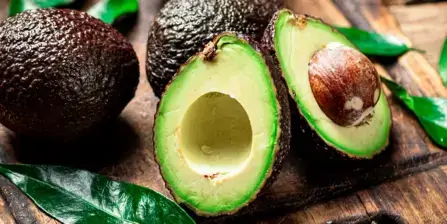
Planning & Prep
How To Ripen Avocados: Quick & Easy Tips
Avocados have a creamy texture and rich flavor, making them one of the most delicious fruits to eat by themselves or in classic dishes. From guacamole for game day to avocado BLTs for lunch on…...
Jan 23, 2024
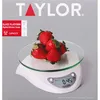
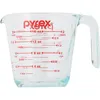
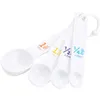
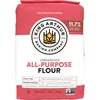
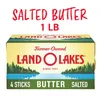
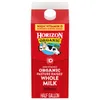
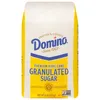
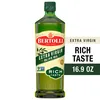
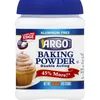

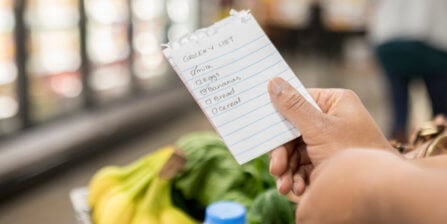 17 Grocery List Categories to Make Shopping Easy
17 Grocery List Categories to Make Shopping Easy 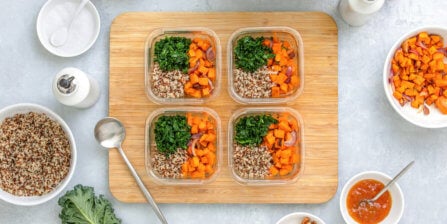 How to Meal Plan: Step-by-Step Guide to Meal Planning
How to Meal Plan: Step-by-Step Guide to Meal Planning  How To Read Food Labels: Guide to Nutrition Labels
How To Read Food Labels: Guide to Nutrition Labels 

